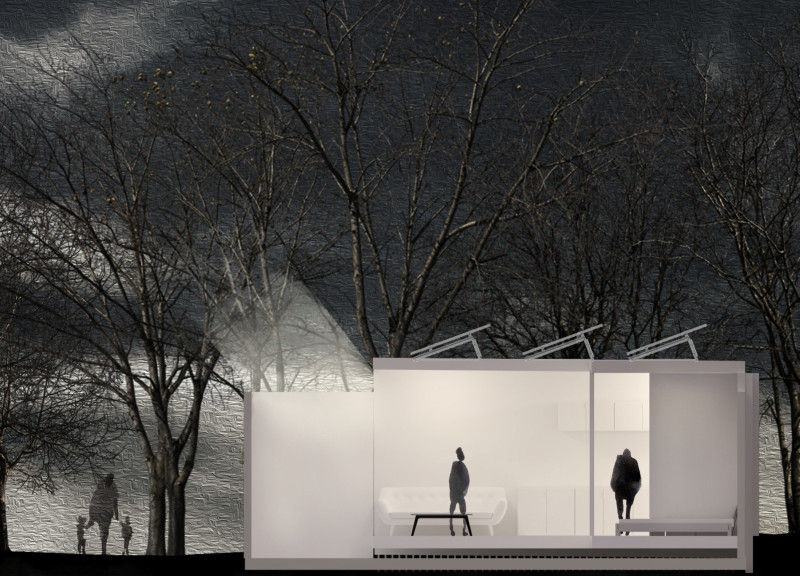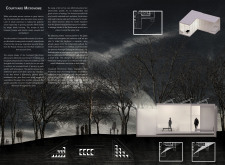5 key facts about this project
The Courtyard Microhome offers a practical solution for urban housing in areas facing land shortages and high real estate prices. The setting focuses on small, often overlooked plots found between single-family homes in metropolitan regions. The design aims to provide affordable living spaces that maximize land usage while ensuring privacy and a connection to nature.
Design Concept and Influences
The design draws on historical architectural styles, particularly the Roman Domus and Hui Style residences from ancient China. These influences shape the layout and functionality of the microhome. Its unique form fits well within irregular plots, making efficient use of limited space while maintaining a cohesive look in the suburban landscape.
Garden Integration
At the heart of the microhome is a garden that serves multiple functions. This space not only provides a quiet area for relaxation, but it also supports sustainable living through hydroponic gardening, allowing residents to grow their own vegetables. The garden enjoys southern exposure, which helps bring in natural light and improves the overall ambiance of the living areas.
Structural and Material Considerations
The flat roof design makes room for photovoltaic panels, promoting energy independence and sustainability. Timber serves as the main material for the home's structure and load-bearing walls, while hempcrete is used for insulation. This combination addresses energy efficiency and reflects a commitment to environmentally conscious building practices.
Interior Flexibility
Inside, the microhome features a versatile layout, particularly in the bedroom. By using vertical planks alongside the bathroom wall, the design eliminates the need for conventional doors. This approach allows light to flow freely throughout the space. The bedroom can easily shift from a resting area to a small workspace, meeting the demands of modern urban living.
The relationship between indoor and outdoor spaces enhances the daily living experience. The Courtyard Microhome illustrates a thoughtful approach to urban housing, integrating practicality and comfort in a constrained environment.



















































